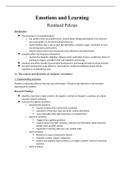Summary
Journal Zusammenfassung - Wien Aufnahmeprüfung 2022 Master Psy
- Course
- Institution
They are a bit elaborative, but so will be the test as well i guess :)))) I'll be uploading summaries of the books soon as well, so keep an eye onnit ♡
[Show more]



